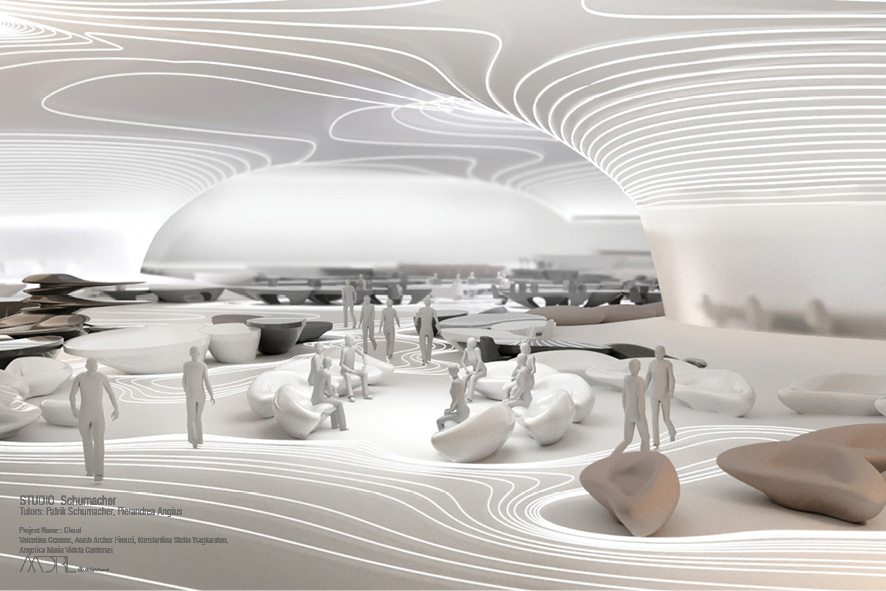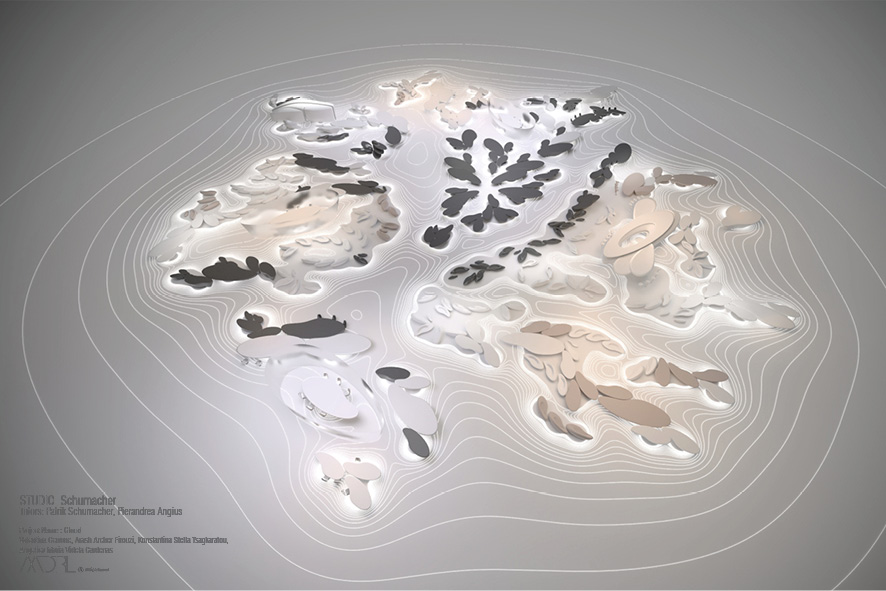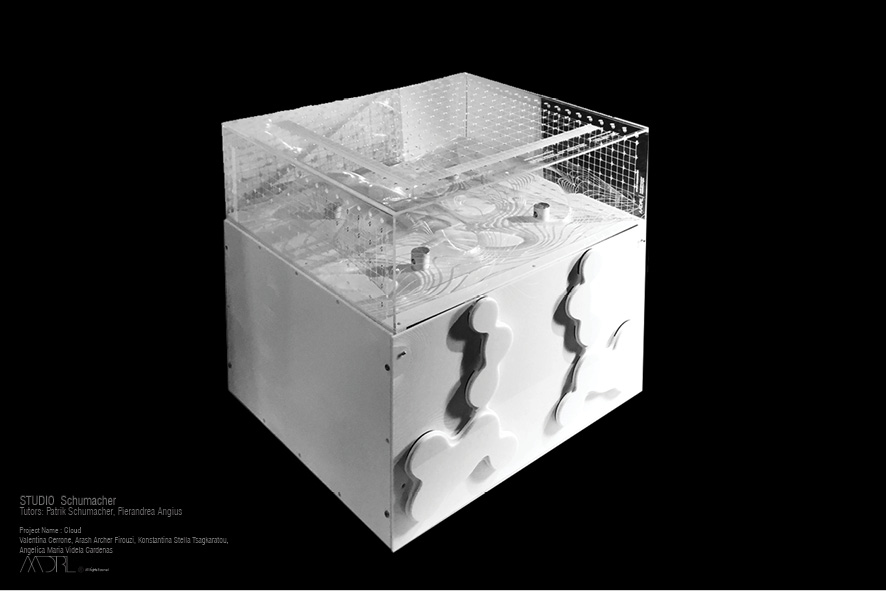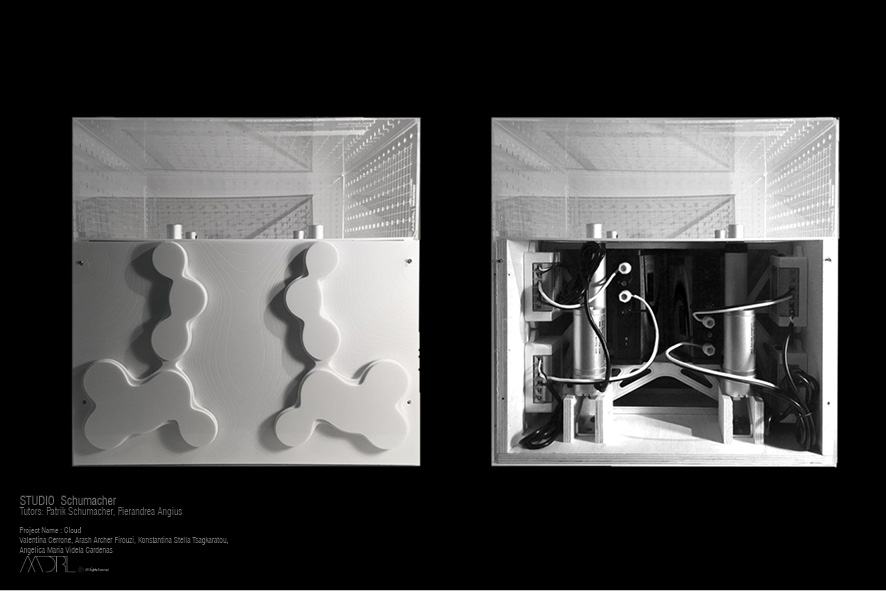Constructing agency 2016-2018
cloud Agent-Based Parametric Semiology
Studio Patrik Schumacher
Tutor Pierandrea Angius
Team Valentina Cerrone (Italy), Arash Archer Firouzi (Iran - USA), Konstantina Stella, Tsagkaratou (Greece), Angelica Maria Videla Cardenas (Chile – France)
Our research is a study of the application of Semiology, as a parametric system, in framing social situations, in dynamic work environments. The core of the research is theoretical. The semiological system that is designed as a product of the research is applied to an Incubator for Start-Ups.
The designed space is information rich, so as to suggest behaviours and interactions, and dynamic, so as to accommodate and facilitate the tasks that need to be performed.
Methodology:
The semiological systems we designed are systems of distinctions that are working together. Similar to sentences, where the words are combined to communicate a meaning, our systems are combined to communicate information, having restrictions (grammar) and possibilities (vocabulary).
This language, is tested in neutral environments and its success depends on its legibility, communicative capacity to the crowds and the effectiveness of the types of interaction it suggests. Those communications answer to specific needs in different moments in time, thus making the space readable even if it transforms.
To assist us with the spatial organisation, we generate a vector field. In our system, everything is interconnected and changing one parameter can potentially affect its entirety. The space is conceived as a continuous field of elements, creating clusters and highlights. The field is generated in a way that answers to the organisational and phenomenological requirements of the space.
By varying the field’s parameters, different types of organizational patterns are generated and can be distinguished in different typologies. This categorization allows us to articulate the space systematically and to suggest social behaviours. Relating spatial to social organization is essential in the development of a system of correlations.
Scenario and Testing:
The theoretical semiological system that is developed is then tested in the 'Semiology Game' which includes a learning game for perspective users and simulation scenarios that lead to the evaluation of the system.
The scenarios simulate the interactive agency of both the users and the built environment. The behaviour of the systems is emergent and depends on the dynamics and flows that are developed, in combination with the tasks that need to be performed. The systems have a cause-effect logic that is circular and adds to the complexity of the relationships between the parts.



















